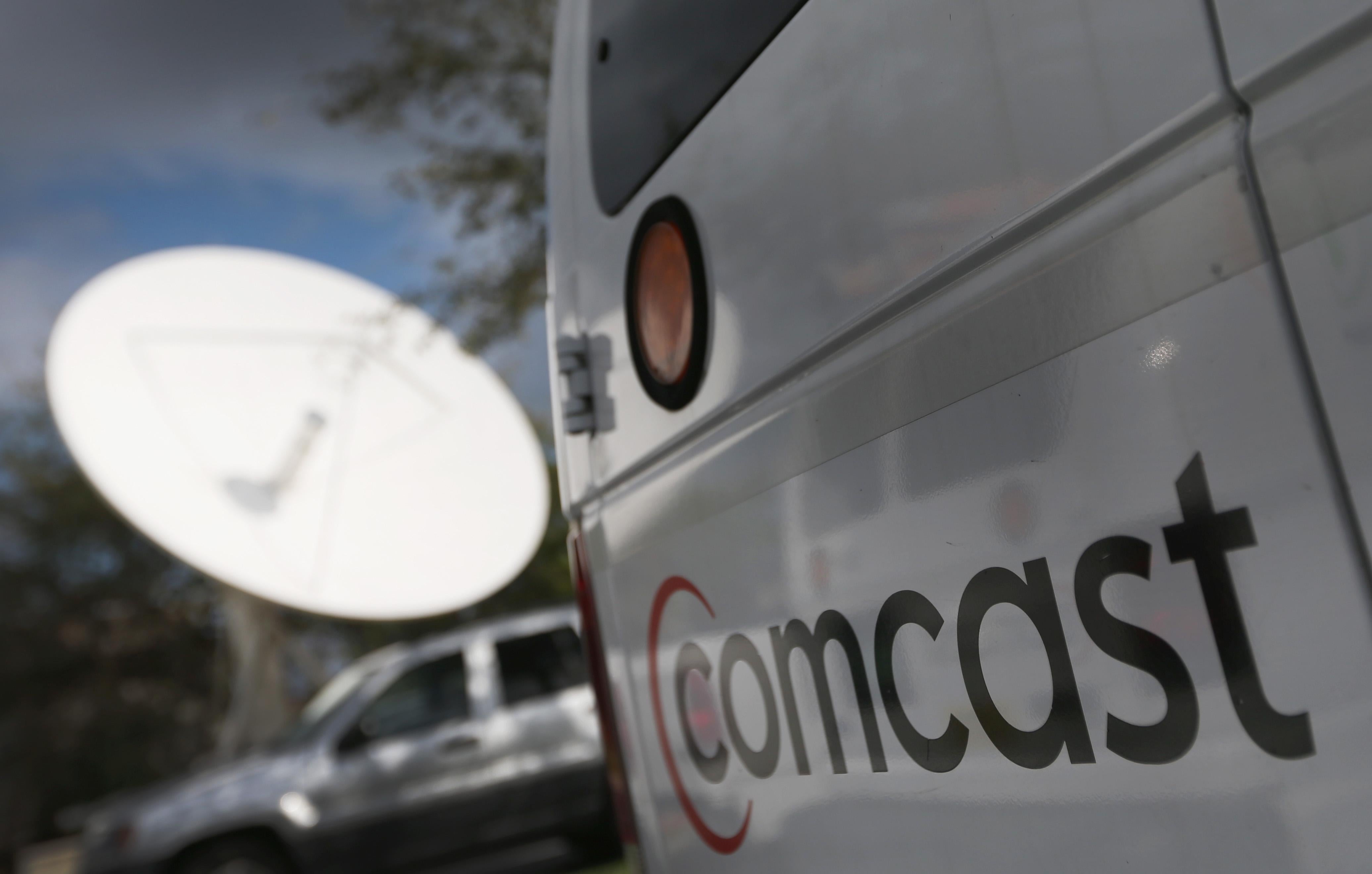A week and a half after its much-hated mega-merger with Time Warner Cable imploded, Comcast is ready to do better. On Tuesday, the company announced a comprehensive plan to repair at least one part of its ugly reputation: shoddy customer service. “It’s unacceptable some of the individual instances that have been, you know, well-documented,” Comcast CEO Brian Roberts said in a presentation. “And so it was a rallying cry, I think, inside the company, that we are going to top-to-bottom rethink the way we do business.”
Comcast plans to hire more than 5,500 people for customer-service jobs over the next few years and to invest in technology and training for those employees. The company will make its billing processes simpler and more transparent. It will create three customer support centers and triple the size of the team that handles queries coming in through social media. A “tech tracker” tool Comcast is piloting, which lets customers keep real-time tabs on when their technician will arrive, should be rolled out nationwide before the end of the year. And by the time the third quarter rolls around, Comcast says it aims to always be on time for customer appointments.
Should you believe it? As Colin Lecher points out at the Verge, “Comcast has a less than sterling track record when it comes to delivering on promises, especially when it comes to customer service.” On the other hand, Comcast just emerged from a very public chastening. Since Comcast began pursuing an acquisition of Time Warner Cable more than a year ago, its entire business strategy has hinged on becoming a cable and broadband monolith. Had the merger gone through, Comcast would have served about 30 million customers and controlled a formidable 57 percent of the market for broadband and 30 percent of the market for pay TV. Throughout the merger process, Comcast insisted that the deal would bring “substantial benefits to consumers.” But after several embarrassing public-relations debacles last year—including a repeat title as worst company in America—those vague assurances were hardly comforting.
Comcast, like most big cable operators, is essentially a sprawling amalgamation of local monopolies. While there are plenty of other cable companies out there, for many consumers it’s likely to be the only passable provider. That’s presumably why Comcast and many of its peers have coasted on such bad customer service for so long—there’s not really a competitive incentive to improve. That Comcast is setting an explicit goal to show up on time to customer appointments is a crazy demonstration of just how powerful it is. Most companies can’t afford to not be on time. One big reason Uber and Lyft and Instacart and other on-demand service providers have taken off is that they’re fast and they’re reliable. Comcast is only now starting to respond to those pressures.
Unlike other industries that have been “disrupted” by tech companies, however, cable and broadband are hard to change. The infrastructure involved is such that a startup can’t just go in and casually rework it the way Uber can roll into a new city and challenge the local taxi establishment. In that way, cable providers are sort of the ultimate incumbent. Still, there have been recent glimmers of change. In cable, Comcast is facing increased competition from cord-cutting services like Netflix and Apple TV. In broadband, Google is slowly building and expanding Fiber, its ultra-high-speed connection.
Asked at their presentation on Tuesday whether poor customer service was a factor in the collapse of the Time Warner Cable merger, Comcast executives demurred. That said, when the merger died, Comcast lost its shot to consolidate its control over American consumers. Now, it has to make nice with them instead.
